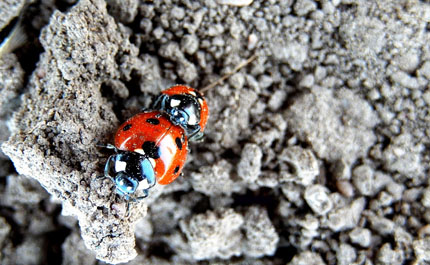Soil Science Society of America
5585 Guilford Road • Madison, WI 53711-5801 • 608-273-8080 • Fax 608-273-2021
www.soils.org
Twitter | Facebook
NEWS RELEASE
Contact: Hanna Jeske, Associate Director of Marketing and Brand Strategy, 608-268-3972, hjeske@sciencesocieties.org
How does water move through soil?
May 16, 2016 – In the basic water cycle, water falls on the land in some type of precipitation (rain or snow). It either is soaked into the ground or runs off into a body of water – storm water or natural. Eventually, it returns to the atmosphere. But the story about water movement in soil is complex. Soil scientists call this topic “soil hydrology.” The Soil Science Society of America (SSSA) May 15 Soils Matter blog post explains how soil texture, soil structure, and gravity influence water movement.
 According to James Hartsig, a soil scientist with Duraroot Environmental Consulting, soil particles are either sand, silt, or clay. The relative amount of sand, silt, and clay in a given area makes up the soil texture.
According to James Hartsig, a soil scientist with Duraroot Environmental Consulting, soil particles are either sand, silt, or clay. The relative amount of sand, silt, and clay in a given area makes up the soil texture.
And, different textures of soil will have different size pores between particles. “These pores exist in gaps where soils particles come together. The large pores of a sand-dominated soil, where the particles are larger might allow more water flow than the micropore space in a clay-dominated soil, where particles are smaller and held together tightly.”
“Water will move in and out of these pores if they are connected to one another,” says Hartsig. “These pores also allow water to enter the soil surface through infiltration, where it starts moving both laterally and vertically.”
“By identifying and evaluating the soil physical characteristics of a given soil profile, soil scientists can determine the rate of water movement and if measures need to be taken to improve it,” says Hartsig.
To read the entire blog post, visit http://soilsmatter.wordpress.com.
Follow SSSA on Facebook at https://www.facebook.com/SSSA.soils, Twitter at SSSA_Soils. SSSA has soils information on www.soils.org/discover-soils, for teachers at www.soils4teachers.org, and for students through 12th grade, www.soils4kids.org.